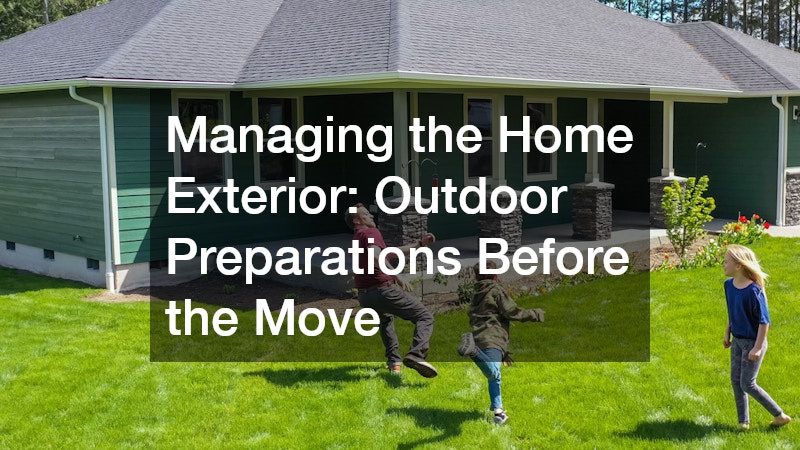Moving can be one of the most exciting yet stressful experiences for any family. Between packing boxes, managing children’s schedules, and adjusting to a new community, it’s easy to feel overwhelmed. The key to success is planning well in advance and making informed decisions that streamline the process from start to finish. Whether you’re relocating across town or across the country, following structured advice and relying on trusted professionals can make all the difference. In this comprehensive guide, you’ll find smart moving tips for families that simplify everything from decluttering your home to setting up your utilities in your new residence. With thoughtful preparation, the entire journey can become a positive transition rather than a stressful disruption.
Getting Organized Early: The Foundation for a Smooth Move
Organization is the cornerstone of a successful relocation. Families often underestimate how much time it takes to sort, pack, and prepare, leading to last-minute chaos. Start by creating a moving timeline that begins at least two months before your move. This allows you to tackle tasks in small, manageable steps and avoid feeling rushed. Write down every key milestone, such as booking movers, changing addresses, and scheduling school transfers.
Begin by decluttering each room. Decide what to keep, donate, sell, or discard. Not only will this reduce the number of items to move, but it also cuts down on costs if you’re paying by weight or volume. Label boxes according to the room and category, and color-code them for even easier unpacking. Many families find it helpful to use digital tools like inventory apps or spreadsheets to track their belongings.
Additionally, consider how your family’s daily routine will be impacted during the moving process. You’ll want to maintain consistency for children and pets, especially if the move spans several days. Plan meals, sleeping arrangements, and activities ahead of time to minimize disruptions. A well-thought-out organizational strategy ensures that moving tips for families aren’t just words on a checklist—they’re practical tools that keep your relocation on track and stress-free.
Choosing the Right Professionals: Why Quality Matters
When planning a relocation, one of the most important decisions involves selecting trustworthy professionals. There’s no shortage of moving and storage companies, but quality and reliability can vary widely. Research at least three companies before committing. Look for verified licenses, insurance coverage, and positive reviews. It’s wise to get written estimates based on in-person or virtual inspections rather than quotes given over the phone, which can be less accurate.
In addition to transporting belongings, you might require short- or long-term storage. Many companies offer climate-controlled facilities that protect sensitive items such as antiques, electronics, or family heirlooms. Ask potential movers about storage security measures, access hours, and insurance policies. For families relocating temporarily before their new home is ready, storage flexibility can prevent headaches later.
It’s also essential to verify that movers understand your specific needs. Families with young children or elderly members may need additional assistance loading, unloading, or setting up furniture. A good company provides clear communication, a detailed contract, and itemized billing to prevent misunderstandings. Choosing the right professionals saves time, minimizes stress, and ensures your items arrive safely and on schedule. Remember, investing in reputable experts is one of the smartest moving tips for families—a safeguard that turns a potentially chaotic move into a seamless experience.
Budgeting for Success: Avoiding Hidden Costs and Financial Surprises
Every move comes with expenses beyond the obvious truck rental or mover’s fee. Creating a detailed budget early helps you anticipate these costs and prevent unpleasant surprises. Begin with major expenses such as packing supplies, transportation, and insurance. Then, include smaller items like utility deposits, cleaning supplies, and meals on the road. The more comprehensive your budget, the better prepared you’ll be.
Don’t forget to account for temporary accommodations if there’s a gap between move-out and move-in dates. Consider pet boarding or childcare during the busiest days, as these can add up quickly. If you’re relocating for work, find out whether your employer offers relocation assistance or reimbursements. Even small allowances can offset costs.
One area that often catches families off guard involves waste disposal. Large-scale cleanouts generate debris, and that’s where dumpster rentals come in handy. Renting a dumpster allows you to dispose of unwanted items safely and efficiently without making multiple trips to a landfill. This convenience becomes especially valuable during downsizing or home renovation moves.
Tracking every expense in a spreadsheet ensures transparency and allows you to adjust your plan as needed. Financial foresight is not just about saving money—it’s about creating stability during a major life change. Among the best moving tips for families is to treat budgeting as an ongoing process, updating it as your needs evolve through each stage of the move.
Managing the Home Exterior: Outdoor Preparations Before the Move
When preparing for a move, families often focus entirely on indoor packing while overlooking the exterior of the property. However, your yard and outdoor spaces require equal attention. Overgrown branches, loose debris, or obstructed pathways can create safety hazards for movers and delay progress. This is where tree removal companies become essential partners. Professional arborists can trim branches near power lines, remove unstable trees, or clear large roots that might interfere with moving vehicles or equipment.
Similarly, inspect your driveway and walkways for cracks or obstacles. Repairing them ensures easier access for moving trucks and prevents potential damage to property. If you’re leaving behind garden structures or sheds, decide whether to dismantle, sell, or transport them. Outdoor furniture, planters, and play equipment should be cleaned and labeled before moving day.
Outdoor maintenance also influences curb appeal, particularly if you’re selling your home. A well-groomed landscape reassures buyers that the property has been cared for. Consider hiring pest removal services to handle wasp nests, rodents, or other nuisances that may have accumulated around your yard or attic. Not only will this protect your movers, but it also prevents infestations from traveling with your belongings.
Taking care of exterior details ensures efficiency and safety, setting the stage for a smoother move. Paying attention to both the interior and exterior environments demonstrates the holistic approach behind effective moving tips for families, ensuring no aspect of your transition is overlooked.
Handling Special Services and Safety Considerations
Certain properties come with unique challenges that require professional intervention before or during a move. For example, if your current or new home has beehives or wasp nests, contact a professional specializing in hive removal. Attempting to remove them on your own can be dangerous, especially if anyone in your household has allergies. Certified specialists can relocate the hive safely and prevent future infestations.
Another consideration involves the presence of unwanted pests or rodents. Scheduling pest removal services before moving day ensures your home is clean, sanitary, and ready for packing. This precaution keeps pests from traveling inside boxes or damaging furniture during transit. If your new home has been vacant, an inspection is equally important before unpacking.
Families with pets or small children should also think about chemical safety. When using cleaning agents, pest control products, or other solutions, store them securely and label them clearly. Discuss safety protocols with your movers to prevent accidents involving heavy furniture or fragile items. Simple precautions like keeping pathways clear and marking boxes with “fragile” labels reduce risks during loading and unloading.
One of the most practical moving tips for families is to treat your home as a work zone during moving day. Assign roles, keep pets confined to a safe room, and ensure children understand where they can and cannot go. Prioritizing safety not only protects your loved ones but also minimizes damage and disruption throughout the process.
Packing Like a Pro: Strategies That Save Time and Stress
Efficient packing can transform your moving experience from overwhelming to organized. Begin with items you use least—such as seasonal decorations, books, or off-season clothing—and gradually move toward daily essentials. Always use sturdy boxes, strong tape, and cushioning materials like bubble wrap or packing paper. Label each box by room and list its contents to streamline unpacking.
For families with delicate electronics, consider using anti-static materials and original packaging when possible. It’s also worth exploring residential moving services that specialize in handling fragile or high-value items. These professionals bring the right equipment and experience to ensure your belongings remain intact.
Large appliances require special attention. Defrost refrigerators, disconnect washers and dryers, and secure cords and hoses. For sensitive equipment like televisions or computers, back up your data beforehand in case of accidental damage.
Another packing strategy involves an “essentials box.” Fill it with must-have items for the first few days in your new home—clothes, toiletries, important documents, chargers, and snacks. This box should travel with you personally rather than in the moving truck.
Remember, successful packing isn’t just about fitting things into boxes—it’s about creating a system. Organized packing minimizes stress during unloading and helps you settle in faster. Keeping this structured approach aligns perfectly with reliable moving tips for families, turning a daunting process into a well-executed plan.
Managing Long-Distance Relocations: What to Expect
Moving across state lines or even across the country requires extra layers of planning. When hiring a long distance mover, it’s essential to verify credentials through the U.S. Department of Transportation. Interstate movers must have a valid DOT number, proof of insurance, and compliance with federal regulations. Don’t hesitate to request references from previous customers or check the company’s track record with consumer protection agencies.
Long-distance moves often involve extended transit times, which means your belongings could be in storage for several days or weeks. Pack items carefully using moisture-resistant materials to prevent damage. It’s also smart to take photos of valuable items before loading them, ensuring you have documentation for insurance claims if needed.
Create a travel plan for your family that accommodates rest stops, meals, and overnight stays. Keep important documents—like medical records, school transcripts, and pet vaccination papers—accessible at all times. If you’re driving, schedule maintenance checks for your vehicle and plan routes that avoid construction-heavy areas.
Communication is key. Ask your mover for real-time tracking updates and establish a clear delivery window. This transparency helps you coordinate utility connections, mail forwarding, and scheduling deliveries once you arrive. Staying proactive throughout the journey ensures peace of mind and reinforces why careful planning remains one of the most valuable moving tips for families undertaking a major transition.
Setting Up Utilities and Home Systems in Your New Place
Once you arrive at your new home, getting utilities up and running quickly becomes a top priority. Electricity, water, internet, and waste services are essential to restoring normalcy. Contact providers a week before your move to schedule service transfers or installations. This prevents delays and ensures a smooth transition.
Modern homeowners are increasingly adopting sustainable systems for water and energy efficiency. Installing electronic water conditioning can improve water quality, reduce scaling, and extend the lifespan of appliances. Families moving into areas with hard water find these systems especially beneficial for protecting plumbing and maintaining consistent water flow.
It’s also smart to perform a basic inspection of your new property upon arrival. Look for leaks, damaged outlets, or signs of prior flooding. If you discover issues like ceiling stains or warped flooring, reach out to local water damage restoration experts immediately. These professionals can assess and repair moisture-related damage before it worsens, preventing mold growth or structural problems.
Coordinating Deliveries and Additional Services
As you unpack and arrange your new space, certain items may require delivery or installation. Whether it’s new furniture, appliances, or décor, timing these arrivals strategically keeps your home from becoming cluttered. Reliable delivery services play an important role here. Choose companies that offer scheduled delivery windows and real-time tracking to avoid missed appointments or confusion.
If you’ve purchased large furniture pieces, measure doorways, hallways, and staircases beforehand to ensure a smooth entry. Communicate with delivery teams about your floor plan so they can position items correctly the first time. This saves time and prevents unnecessary heavy lifting later.
Families who moved long distances may also coordinate the arrival of personal shipments or online orders that were postponed during the move. Use digital dashboards or email alerts to monitor progress. Remember to dispose of packaging responsibly by recycling or using remaining dumpster rentals if still available from your move.
As you finalize setup, take the opportunity to review warranties and registration forms for new purchases. Keeping documentation organized protects your investment. Properly managing deliveries and post-move logistics supports a stress-free transition—one that’s fully aligned with comprehensive moving tips for families seeking to balance convenience, timing, and functionality.
After weeks or months of preparation, the final phase of moving involves transforming your new house into a true home. Begin by unpacking the most essential areas first—the kitchen, bedrooms, and bathrooms. Having these functions immediately restores a sense of normalcy. Encourage every family member to personalize their space with familiar items like photos, bedding, or favorite decorations. This fosters comfort and emotional stability, especially for children adjusting to a new environment.
Explore your neighborhood early. Locate grocery stores, schools, parks, and healthcare facilities. Introducing yourself to neighbors can help your family integrate faster into the community. Many families also benefit from maintaining routines, such as shared mealtimes or weekend outings, which reinforce stability during change.







